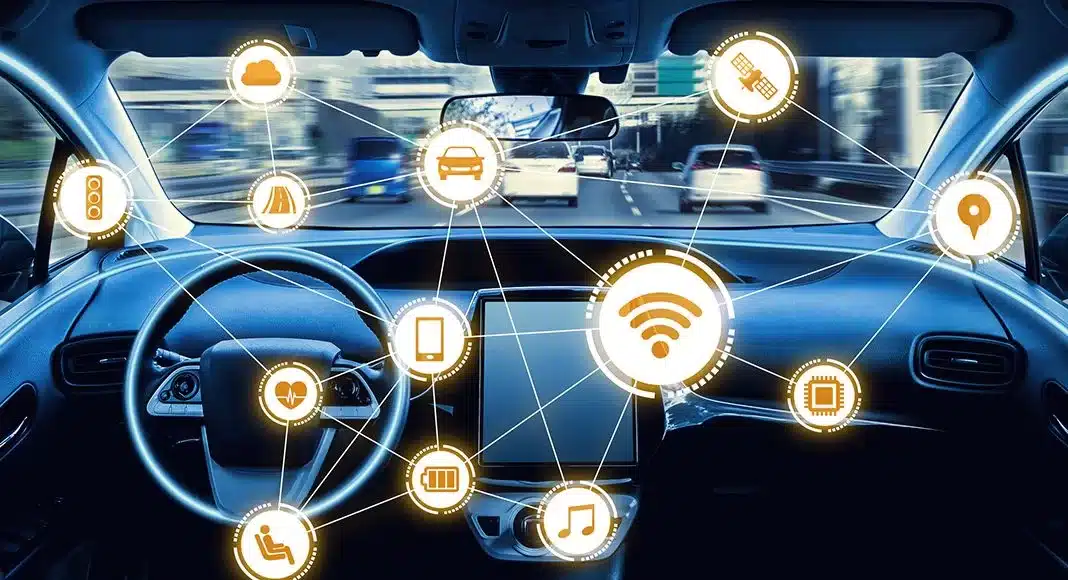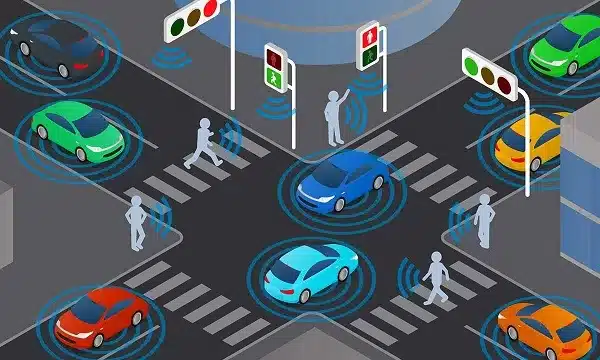Emerging Trends in the Automotive Industry:
The automotive industry is undergoing a major transformation and driven by a wave of technological innovation that is changing the way vehicles are designed, manufactured, and used. The automotive industry is rapidly advancing from electric vehicles to self-driving cars, these trends are transforming the way we move and interact with our vehicles.
As technology continues to advance, automakers are investing heavily in research and development to stay ahead of the curve and meet the demands of consumers who are seeking more sustainable, efficient, and innovative transportation solutions.

What are the trends shaping the automotive industry in 2023?
From the electric powertrains to autonomous driving systems, here are 11 mega promising technological trends that are shaping the future of automotive industry in 2023:
- Electric Vehicles (EVs): As the world transitions to cleaner forms of energy, electric vehicles are becoming more popular. EVs are powered by rechargeable batteries, which can be charged using a variety of methods, including plug-in charging stations and wireless charging pads. EVs are not only playing a vital role in reducing greenhouse gas emissions and improve air quality but they also offer several benefits for drivers, such as lower fuel costs and reduced maintenance requirement.
One of the main challenges with electric vehicles has been the limited range of the batteries, which has made them less practical for long distance driving but with the advances in battery technology are helping to address this issue and new batteries that offer longer ranges and faster charging times.
- Artificial Intelligence (AI): Artificial Intelligence is becoming increasingly important in the automotive industry as it can be used to power autonomous driving systems as well as assist with vehicle diagnostic and maintenance. AI can also be used to analyze data from sensors and other sources to help optimize vehicle performance and reduce fuel consumption. By analyzing data from sensors and other sources, AI can detect potential issues before they become serious, enabling preventive maintenance, and reducing the risk of breakdowns. With the help of AI, vehicles can become more intelligent, responsive, and self-governed.

- Self-Governed driving: Self-driving cars are no longer a futuristic dream but a reality that is rapidly becoming mainstream. Autonomous vehicles use a variety of sensors and software to navigate roads, making driving safer and more efficient. The 3D model of the vehicle’s surrounding enables the self-driving car’s control systems to make decision about how to navigate the environment, such as accelerating, braking, and steering without requiring direct input from a human driver. The use of advanced sensors and control systems also allows self-driving cars to react quickly to changes in traffic patterns, road conditions and other factors making them potentially safer and more efficient than traditional vehicles.
- Advance Driver Assistance Systems (ADAS): ADAS is a large term that embraces a range of technologies designed to assist drivers and prevent accidents. Some of the most popular ADAS features include lane departure warning systems, blind spot detection and forward collision warming or braking systems. As these technologies become more sophisticated, they are expected to play a key role in reducing the number of accidents on the road. According to a recent report by Statista, the autonomous vehicle market is expected to expand by nearly 60% by 2023, due to the advancements in automation technology and artificial intelligence.
- Augmented Reality (AR): AR use a technology that overlays digital information onto the real world by using cameras and other sensors. In the automotive industry, AR dashboard software can provide drivers with a range of useful information, such as speed, fuel level and navigation directions, overlaid directly onto the rear world view of the road ahead. By presenting this information in a visually appealing way, AR dashboard software can help drivers stay informed and focused on the road without the need to constantly look away at a separate dashboard or display. This can improve driving safety and reduce the risk of accidents caused by distracted driving. As, AR technology continues to evolve and become more advance, we can expect to see even more innovative application of AR dashboard software in the automotive industry.
- Vehicle to Everything (V2X) Communication: V2X communication refers to the exchange of information between vehicles and the surrounding environment. Vehicle-to-everything technology consists of the sensors, cameras, and wireless connectivity, such as WIFI, LTE and 5G cellular technology, radio frequencies, that would allow cars to share information with each other, with drivers and their surroundings.

As, V2X technology continues to evolve and become more widespread, it has the potential to transform the way we drive and interact with our vehicles. By enabling cars to communicate with one another, with infrastructure and with pedestrians, V2X technology can help to reduce accidents, improve traffic flow, and increase overall driving safety and efficiency. V2X technology could allow cars to automatically adjust their speed and position to avoid collisions or to receive real-time updates on traffic patterns and road conditions, enabling them to navigate more efficiently and avoid congestion. As the technology continues to develop and become more widely adopted, we can expect to see even more innovative applications of V2X technology in the automotive industry.
- 3D Printing: 3D printing is a rapidly developing technology that is being used in many industries including the automotive sector. 3D printing can be used to create complex parts and components with high precision, reducing the need for traditional manufacturing options for customers. 3D printing offers a solution that enables companies to meet customer demands more quickly and thus differentiate themselves in the marketplace.
The ability to create customized parts with 3D printing can also help to reduce manufacturing costs and lead times, as well as minimize waste by producing only the exact number of parts needed. In addition, 3D printing can enable the creation of parts with more complex geometries and features that would be difficult or impossible to produce using traditional manufacturing methods. This can lead to improved vehicle performance, reliability, and safety as well as greater design flexibility and innovation in the automotive industry. As 3D printing technology continues to evolve, we can expect to see even more exciting and innovative applications in the automotive sector.
- Hydrogen Fuel Cells: Hydrogen fuel cells are an alternative to traditional gasoline-powered engines, using hydrogen to generate electricity and power the vehicle. Hydrogen fuel cells technology still in the initial stages of development and it has the potential to provide a clean and unstainable energy source for transportation. As of 2021, there are two hydrogen cars publicly available in the markets: the Toyota Mirai and the Hyundai Nexo. The first road vehicle powered by a hydrogen fuel cell was the Chevrolet Electrovan, introduced by General Motors in 1966.
The significant demand for low-carbon hydrogen in the transport sector highlights the growing need for cleaner and more justifiable forms of energy in the automotive industry. Hydrogen-powered vehicles offer a range of benefits, including zero emissions and longer driving ranges compared to battery-powered electric vehicles, making them an attractive option for many diverse types of transportation. By 2030, hydrogen fuel to be in use across a range of transport modes, including HGVs, buses, and rail along with early stage used in commercial shipping and aviation.
- Internet of things (IoT): The internet of things (IoT) is rapidly changing the world around us and the automotive industry is no exception. IoT technology is all about connecting devices to the internet so that they can communicate with each other, share data, and make intelligent decisions based on that data. IoT sensors can embedded in vehicles to monitor everything from engine performance to driver behavior. IoT technology is helping to create new business models and revenue streams for automakers. Companies can use data collected from IoT sensors to offer new services to customers, such as remote vehicle monitoring, predictive maintenance and even personalized insurance policies based on driving behavior.
- Predictive Technology: As the automotive industry continues to evolve, one of the most exciting trends is the growing use of predictive technology, which is powered by artificial intelligence and machine learning. Predictive technology is transforming the way we think about driving, by helping us anticipate and respond to potential hazards before they occur.
Predictive technology is all about using data to gain insights into driver behavior and vehicle performance. By collecting and analyzing vast amount of data on everything from driving patterns to maintenance schedules, predictive technology can help drivers stay safe, reduce their carbon footprint, and enjoy a more seamless driving experience.
One of the key applications of predictive technology is around safety. By monitoring driver behavior in real-time, predictive technology can detect signs of fatigue, distraction or other risk factors and issue alerts or take corrective actions to prevent accidents from occurring.
AI-powered systems could learn a driver’s preferences for music, climate control and other settings and automatically adjust these features based on the time of day, weather conditions. This could create a truly personalized driving experience that is tailored to the individual needs and preferences of each driver.
- Shared Mobility: Shared mobility refers to a transportation model where multiple users share a vehicle, rather than owning their own individual cars. This can take many forms, including ride-hailing service like Uber and Lyft, car-sharing programs like Zipcar and Car2Go and bike sharing systems like City bike and Lime.
In a shared mobility system, users typically pay for the access to vehicles on an as needed basis rather than purchasing or leasing a car. This can be a more cost effective and environmentally friendly alternative to a traditional car ownership especially in an urban area where parking can be expensive and traffic congestion is a problem.
The automotive industry is on the blink of a major transformation with the emerging technological driving rapid change. Electric vehicles, autonomous driving, use of artificial intelligence, predictive technology and advanced safety features are just a few of the trends shaping the future of the industry.
There are still many challenges to overcome, such as regulatory and infrastructure issues, the potential benefits of these technologies are enormous. As the automakers continue to invest in research and development, we can expect to see even more exciting advancements in the automotive industry in the years to come, leading to a more sustainable, efficient, and innovative future of transportation.
3 thoughts on “Emerging Trends in the Automotive Industry”